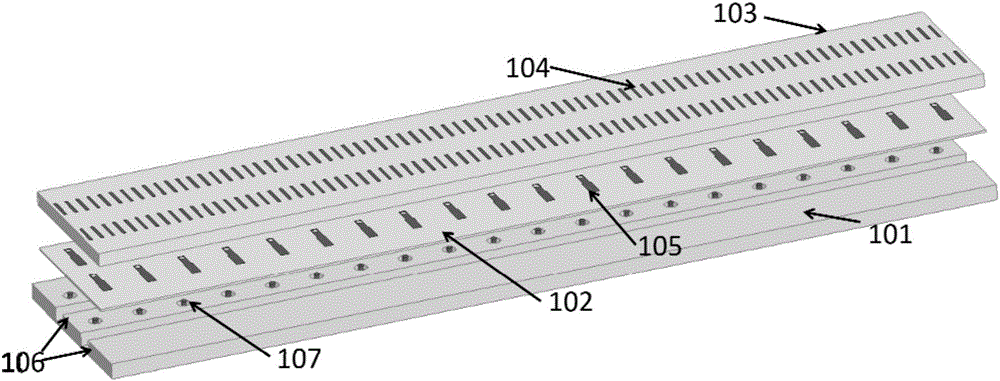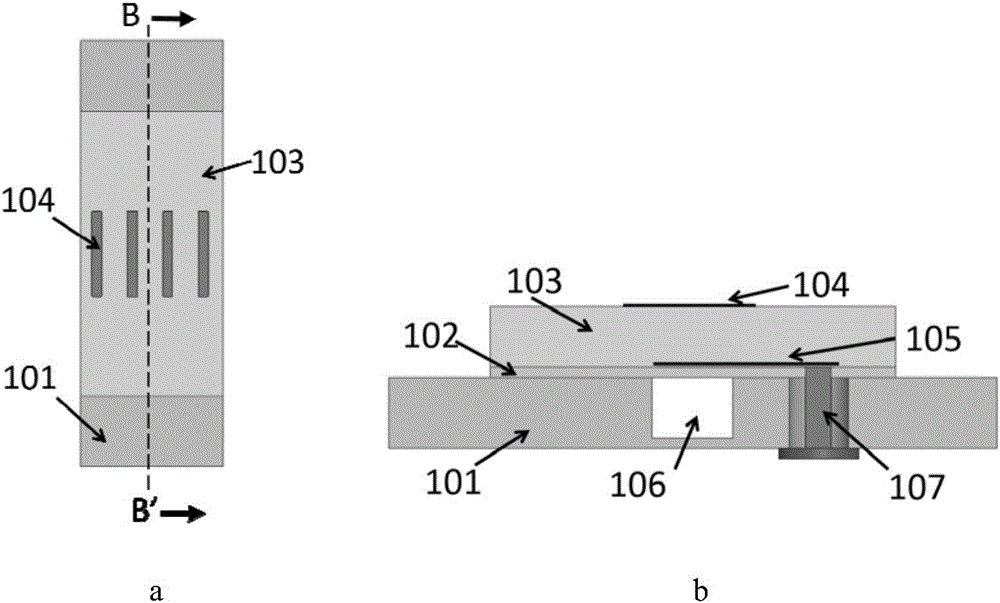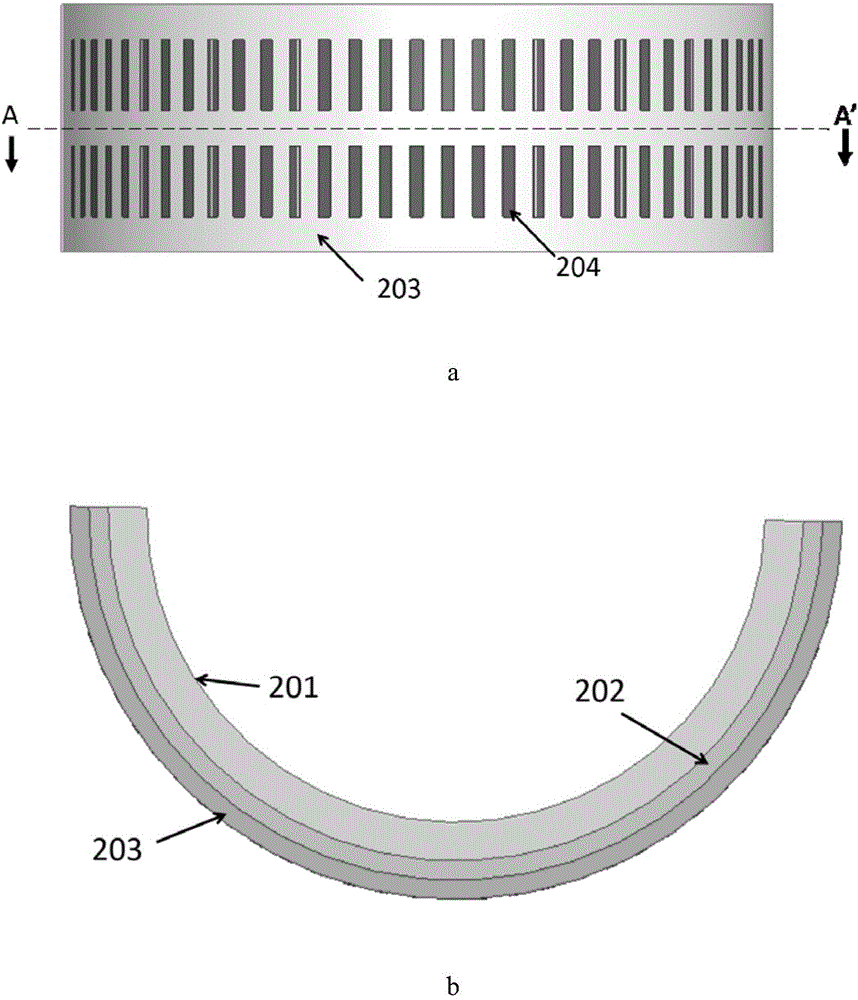Connected cavity based phased array antenna
A phased array antenna and connecting cavity technology, applied in the field of radar technology, can solve the problems of increasing the size of the antenna system, complex feeding network design, high cross-section and difficult integration conformality, etc., to achieve simple structure, convenient processing and assembly, and avoid feeding The effect of electrical network design
- Summary
- Abstract
- Description
- Claims
- Application Information
AI Technical Summary
Problems solved by technology
Method used
Image
Examples
Example Embodiment
[0024] Example 1
[0025] The wide-bandwidth angular scanning phased array antenna based on the connection cavity of this embodiment adopts a 20×2 planar array form, such as figure 1 As shown, it is divided into three layers, including a lower floor 101 with a metal cavity connected, a middle dielectric substrate 101 printed with a microstrip feeder 105, and an upper dielectric substrate 103 printed with a metal patch 104. The lower metal floor 101 is an aluminum plate with a thickness of 3.5 mm. A rectangular section cavity 106 with a depth of 3 mm and a width of 4 mm is processed on the aluminum plate, and the cavity is not filled with medium. The intermediate dielectric substrate 102 has a relative dielectric constant of 2.2, a thickness of 0.5 mm, and a microstrip feeder 105 printed on it. The upper dielectric substrate 103 has a relative dielectric constant of 2.2, a thickness of 3 mm, and a rectangular patch 104 printed on it. The inner core 107 of the microwave coaxial c...
Example Embodiment
[0028] Example 2
[0029] Specifically, each basic antenna unit is separately extended in two dimensions to form Figure 5 Medium 9×9 planar array. The other structure is the same as the detailed description in Embodiment 1.
Example Embodiment
[0030] Example 3
[0031] Figure 7 This is the basic antenna unit structure for dual polarization radiation in this embodiment. As shown in the figure, it is divided into four layers, including a lower floor 701 with a metal cavity connected, a middle dielectric substrate 702 printed with microstrip feed lines 707 and 708, an upper dielectric substrate 703 printed with a metal patch 706, and a metal patch printed with Sheet 705 is the second upper dielectric substrate 704. The inner cores 709 and 710 of the microwave coaxial connector pass through the openings on the lower metal floor 701 and are respectively connected to the orthogonally placed microstrip feeders 707 and 708 for feeding to form dual polarization. The metal patches 705 and 706 are placed orthogonal to each other. Figure 8 It is a schematic diagram of the lower floor structure of a 9x9 planar array using the basic antenna unit. Such as Figure 8 As shown, the floor has long grooves staggered horizontally and...
PUM
| Property | Measurement | Unit |
|---|---|---|
| Thickness | aaaaa | aaaaa |
| Thickness | aaaaa | aaaaa |
Abstract
Description
Claims
Application Information
 Login to View More
Login to View More - R&D
- Intellectual Property
- Life Sciences
- Materials
- Tech Scout
- Unparalleled Data Quality
- Higher Quality Content
- 60% Fewer Hallucinations
Browse by: Latest US Patents, China's latest patents, Technical Efficacy Thesaurus, Application Domain, Technology Topic, Popular Technical Reports.
© 2025 PatSnap. All rights reserved.Legal|Privacy policy|Modern Slavery Act Transparency Statement|Sitemap|About US| Contact US: help@patsnap.com



